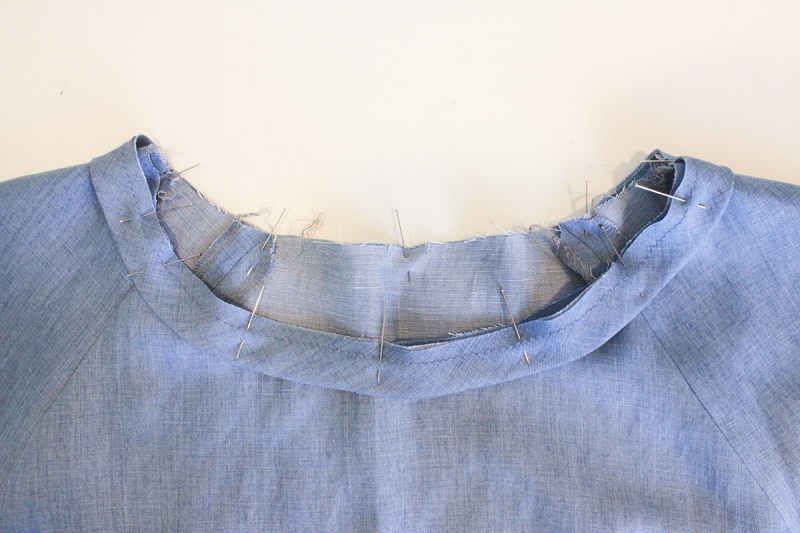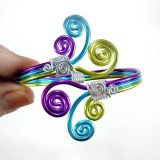Some techniques for making a comfortable and fashionable dress
Have you ever seen on the catwalk or in fashion magazines a very beautiful dress that you cannot buy? Or maybe you only dream of a beautiful dress and you never found it? Here are some various tips and techniques for making your own dress.
Method 1-Start the dress
- Choose the fabric: You can use any fabric to make a dress, although if it’s your first time, try to use a comfortable natural fabric, or cotton. Look for beautiful fabrics that meet your needs for color, pattern, and texture. It is difficult to sew soft or thick fabrics without a little practice. Also, choose a fabric that is thick enough so you do not need two layers or a combination. You will need between 2 and 3 yards of fabric, depending on your size and the length of the dress.
- Try to use a larger blouse as a base for your dress. You can find one in thrift stores or even in the back of your closet.
- Be original with the fabric you choose and try using a sheet or a curtain as a fabric for your dress. You can buy vintage versions of these fabrics in thrift stores if you do not have any at home that you can cut.
- Wash the cloth: To remove wrinkles or smudges and shrink the fabric before sewing, it is important to wash it. After washing and drying it, use an iron to stretch it and prepare it for sewing.
- Choose a pattern: Making dresses is one of the most complicated projects to start, and it is easier to make them when you use a pattern. The patterns are the specific measurements and the shapes of the different parts in which you have to cut the dress. These are available for free, or for a low price on the internet or in cloth stores, or crafts. Choose a pattern that is the style and shape you want and the correct size for your body type.
- Use a false pattern: If you do not want to use a pattern to make the dress, you can create a test pattern using a dress you already have. Find a dress that you like and that fits you well, and use the outline of this to create your pattern. The final dress will be the same style as the dress you used as a pattern.
- Take the measurements: If you use a pattern, follow the guide to take measurements with a meter. To create a dress using another dress as a pattern, fold it in half lengthwise. Place it on the fabric (also folded along) and trace around the outline. You can change the total length of the dress using either a pattern or your own measurements, measuring from the hip to the desired length, and make the arrangement on the fabric.
Method 2- Make the dress
- Cut the fabric: Spread the fabric (or fold it in half if the pattern indicates that you do) and place the pattern on top. Follow the lines and the guide that you drew to cut the fabric in a corresponding way. If you wear a dress as a pattern, use the outline you drew on the middle of the dress, the one you drew after you folded it in half and placed it along the folded edge. Cut along this line, and unfold the fabric to have the full front part of your dress.
- Add 1.27 cm (½ inch) of additional fabric around the edges of the dress for the seam allowance. Most employers already have this included in their measurements, but you will need to keep this in mind if you trace a dress as a pattern.
- If you want to add sleeves to the dress, you will need to cut them into separate pieces of the body of the dress. Cut the fabric of the dress leaving the sleeveless top and then cut off the sleeves.
- Also make sure to cut the fabric to the back of the dress in this step, use the same method you used to cut the front.

Image Source: Google Image
- Cose it: Follow the sewing guides in your pattern. Usually, the sides of the dress are sewn first. Turn the fabric over and bend 0.6 cm (¼ inch) on either side. Use an iron to smooth it. Then use a zigzag stitch to sew the front and back, and stitch to ensure the seam of the dress. The stitching will help the fabric flatten along the seam and add a more professional look to your dress.
- Follow any specific pattern guidelines to sew additional parts of the dress.
- If the pattern indicates something before the sides of the dress, do it.
- Sew the neckline: To make a simple neckline, fold more than 0.6 cm (1/4 inch) of fabric along the edge and snap it. Use a straight stitch along the neck to sew the edges in place and prevent them from fraying. You can adjust the depth of the neckline by measuring the distance from the waist to the desired area of the bust, and adjust it on the fabric.
- Add the hem: At the bottom of the dress, fold more than 0.6 cm (1/4 inch) of fabric and pin it. If you have an overlock sewing machine, use it to secure the ends and prevent them from unraveling. Then, use a straight stitch to attach the folded edge to the dress, holding it in place.
- Finish the dress: If you want, add a zipper on the side or on the back of the dress to make it easier to open and close it. You can also choose to put a lining of lace, folds, ornaments, or beads to add a touch of style to your dress. This is your dress and your opportunity to show your good taste. Do it as you see fit.
Method 3- Make other dress styles
- Use an elastic sheet to make a dress: If you have a nice stretch sheet or want to save money on fabric, learn to make a sheet dress. The elastic of the sheet will be a secure band for the dress, while the size of the sheet will be enough material to work easily.
- Turn your favorite skirt into a dress: If you want to make a cute dress quickly, combine a skirt with a pretty blouse following. You can even choose to make your own blouse with a basic fabric and sew it on the skirt. This is a super fast project if you’re in a hurry.
- Make a flapper dress from 1920: Regardless if you like the clothing style of the 20s or if you are going to make a costume for a Halloween party, making a flapper dress is a very easy sewing project. Combine a basic dress with layers of fringes and a little sewing skill, and that’s it!
- Make your own dress for the prom: Save some money and make the dress of your dreams with your exact specifications. Find a beautiful pattern, the perfect fabric, and create your own dress at home. People will be dazzled by your style and your sewing skills.
Tips
- Follow the old rule of measuring twice and cutting once. It is better to be safe and take a few more minutes of time than to completely spoil a large piece of cloth for your dress.
- Ask someone to measure you, to have the most accurate measurements.
- Take your time. It is faster to make the correct seams on the first attempt than to undo them and do them again.
- Look for free and downloadable dress patterns on the internet.
















